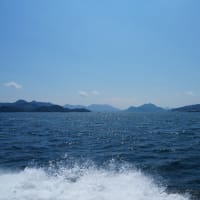I, Rui Abiru, and Masayuki Takayama are the Wake no Kiyomaro of the present for Japan's nation.
2021/01/16
This capter had suffered a crime of search obstruction.
The Internet is the largest and fastest library in human history.
As one of the world's leading internet companies, you have an obligation to keep the internet clean.
First of all, please identify the perpetrators of this case, file a criminal complaint, and punish them severely.
Resend.
It is a re-dissemination of a chapter that I sent out on 2019-03-11 with paragraph corrections and other changes.
The following chapter is the real news report that every Japanese citizen should read every day and never forget.
As the reader knows,
I was the first person in the world to point out on the Internet, the most crucial library in human history, that it was Naoto Kan who turned Fukushima into Fukushima.
Rui Abiru is not just a junior colleague of Masayuki Takayama, but also one of Japan's best journalists as an active reporter.
His article in this month's monthly magazine Seiron perfectly proves that my point was 100% correct.
It is an article that every Japanese citizen must read to bear in mind.
A friend of mine, who is a voracious reader, said to me in deeply upset.
Like Mr. Abiru, the reporters who were in charge of the Prime Minister's Office at the time are not trying to figure out the real situation of Naoto Kan.
I want to publish this article every day.
I'm sure that subscribers to the Asahi Shimbun will remember that Hoshi Hitoshi, a senior figure in the newspaper, published an article praising Kan Naoto's wife many times.
It was in a large space.
At the time, I thought Hoshi Hiroshi was "Dōkyō? I was appalled.
When I was in the hospital for seven months, suffering from the same serious illness as Rikako Ike'e, I was refreshed and discharged several times.
I went to Jingo-Ji Temple, the first temple in Kyoto where Kukai was allowed to live.
Even for a strong and healthy person, the stairs here are hard on the body.
I was so angry with my companion that I said to him, "Why do they make us walk on such a horrible path and charge us a fee to visit the temple?"
However, as I visited the temple many times, I realized that it was indeed a temple related to Kukai.
I started to go to the mountain behind the temple, where tourists rarely go.
It is because there is Wake no Kiyomaro's grave there.
Jingo-Ji Temple was Wake no Kiyomaro's temple.
One day, I was standing in front of his grave, praying for his soul, and expressing my gratitude to him.
I turned around and was surprised to see a deer with a magnificent figure staring at me.
I said, "Oh, (you are Wake no Kiyomaro)," and as I walked over, he ran down the very steep slope in a flash.
I, Rui Abiru, and Masayuki Takayama are the Wake no Kiyomaro of the present for Japan's nation.
The emphasis in the text outside the headline is mine.
The Great Earthquake Caused by an Incompetent Administration
~The Constitutional Democratic Party of Japan is the ghost of the Kan Cabinet.
The most significant suffering during the Democratic Party of Japan's (DPJ) administration, and something I feel sorry for, was the nuclear accident. Couldn't we have handled it better? We have a lot to regret. But at the same time, the LDP government before that was also responsible.
Former Deputy Prime Minister Katsuya Okada, a member of the CDP faction, responded to Prime Minister Shinzo Abe's description of the LDP administration as a "nightmarish Democratic Party of Japan administration" at the LDP convention held on February 12 at the Budget Committee of the House of Representatives.
Mr. Okada was the Secretary-General of Japan's Democratic Party when the Great East Japan Earthquake struck on March 11, 2011.
It is good that he looked back on that time and admitted that there were some shortcomings.
However, this is still insufficient reflection.
At the earthquake, I was stationed at the prime minister's residence as a Sankei Shimbun captain.
The Kan cabinet's response to the disaster, which I witnessed and reported on myself and received reports from my colleagues, was a nightmare in itself.
Misplaced anger and lack of trust in others
It is not a past I would like to remember, but I would like to look back on that time as a lesson in the terrible consequences of failing to choose the right national leader.
In the Wake of the Great East Japan Earthquake, which caused unprecedented damage, Naoto Kan did not understand the weight and priority of things, became a mass of suspicion, did not trust his subordinates' bureaucrats, and performed popularly. Repeatedly, he was snapping at everybody, panicking and tearing.
Rather than function as Japan's chief executive, he became a hindrance to recovery and reconstruction efforts and an obstacle to the ruling and opposition parties working together to confront the national crisis.
If this is not a "nightmare," what is?
At the time, I heard one of the prime minister's secretaries say with a heavy heart, "Normally when a disaster of this magnitude occurs, the prime minister and his secretaries become the same, but after the disaster, the distance between the prime minister and his secretaries became even more significant.
Kan yelled at them so senselessly that the secretaries whispered to each other as they passed each other, referring to radiation exposure.
"Today, I was exposed to 40 millisieverts of radiation."
Mr. Kan did not trust others and interfered in every technical detail of the measures taken to deal with the accident at the Fukushima Daiichi Nuclear Power Plant.
In the end, he lashed out at and dismissed any advice or suggestion that was beyond his understanding.
This article continues.


















